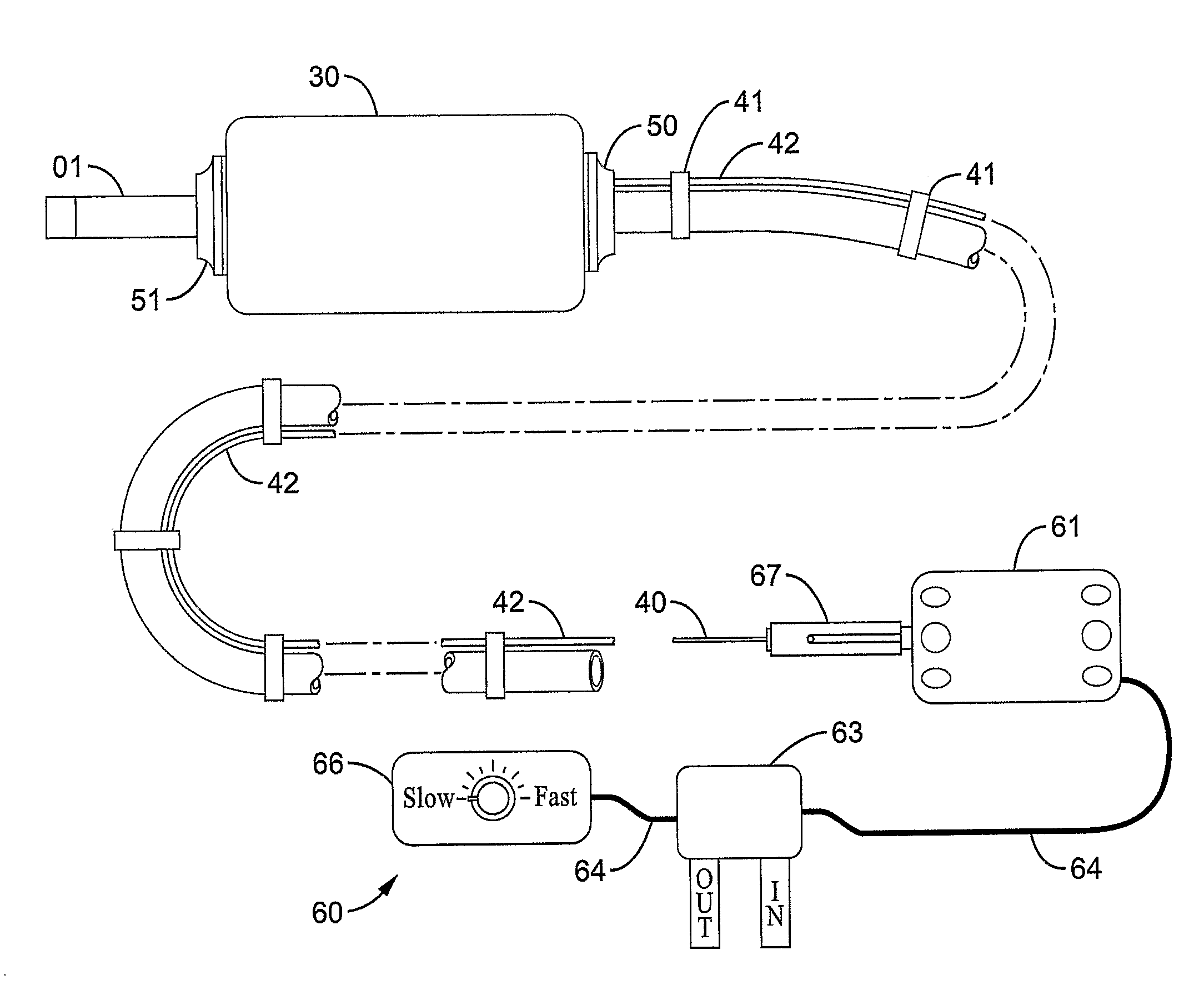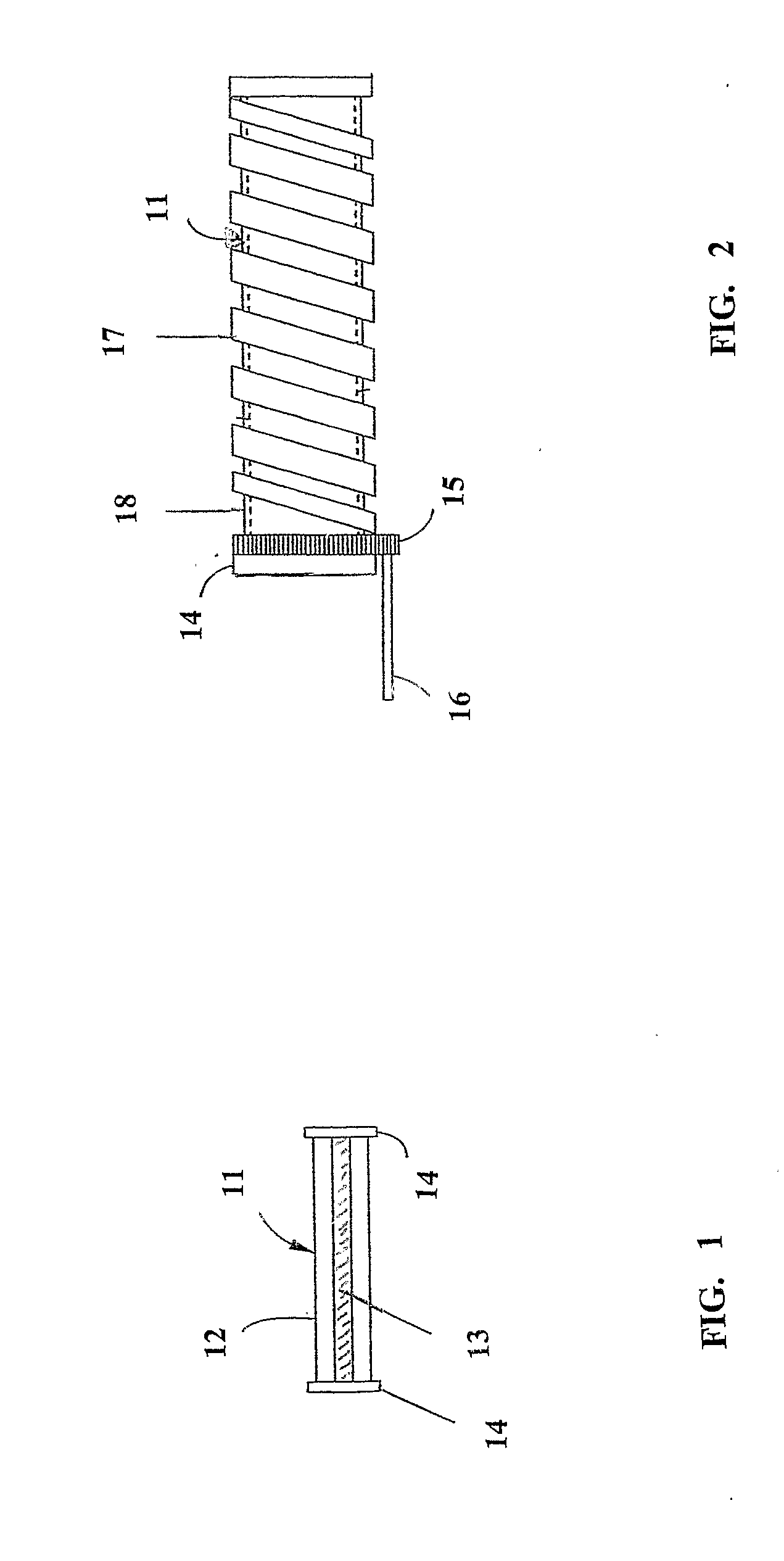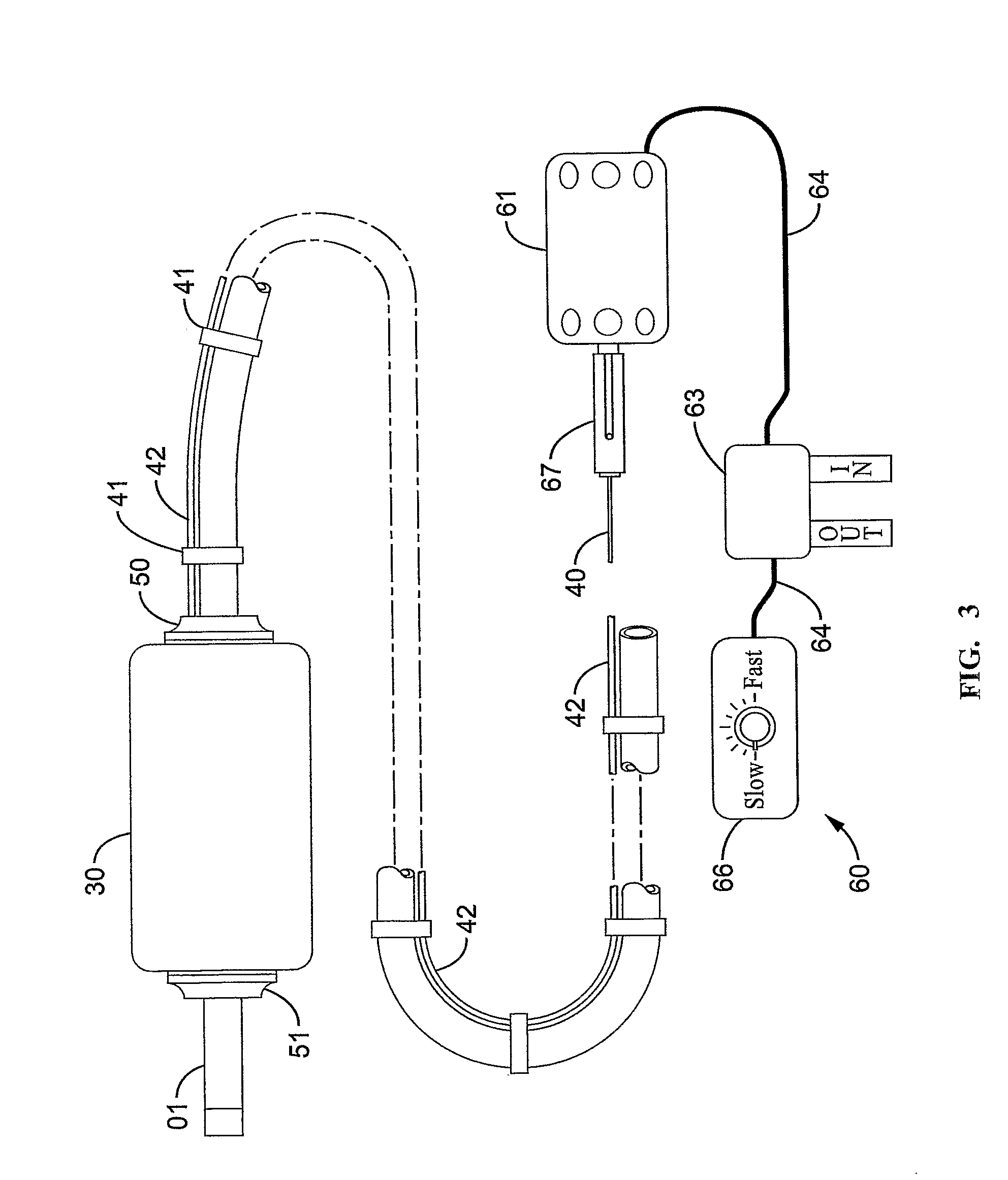Endoscope Propulsion System and Method
a propulsion system and endoscope technology, applied in the field of endoscopy, can solve the problems of too insensitive test for effective screening, early colon cancer and polyps are asymptotic, and about 10 tests too insensitive to effective screening, so as to improve the safety of colonoscopy, reduce procedure-related pain, and safe and effective colon cancer screening method
- Summary
- Abstract
- Description
- Claims
- Application Information
AI Technical Summary
Benefits of technology
Problems solved by technology
Method used
Image
Examples
Embodiment Construction
[0060]Reference will now be made in detail to various exemplary embodiments of the invention, examples of which are illustrated in the accompanying drawings. The following detailed description is provided to detail various elements, combinations, and embodiments of the invention, and is not intended as a limitation of the invention to the particular elements, combinations, and embodiments exemplified.
[0061]In a first aspect, the invention provides a device, such as a medical device or a device for use in non-medical situations. The device may be used for diagnostic purposes and therapeutic purposes in its medical embodiments, and for diagnostic and reparative purposes in its non-medical embodiments. In its various embodiments, it is appropriately sized to fit and function within the particular cavity it is to be used in. Thus, in embodiments, it is sized to fit in a human cavity, such as a colon, vein, or the like. It also may be used in conjunction with another instrument of device...
PUM
 Login to View More
Login to View More Abstract
Description
Claims
Application Information
 Login to View More
Login to View More - R&D
- Intellectual Property
- Life Sciences
- Materials
- Tech Scout
- Unparalleled Data Quality
- Higher Quality Content
- 60% Fewer Hallucinations
Browse by: Latest US Patents, China's latest patents, Technical Efficacy Thesaurus, Application Domain, Technology Topic, Popular Technical Reports.
© 2025 PatSnap. All rights reserved.Legal|Privacy policy|Modern Slavery Act Transparency Statement|Sitemap|About US| Contact US: help@patsnap.com



